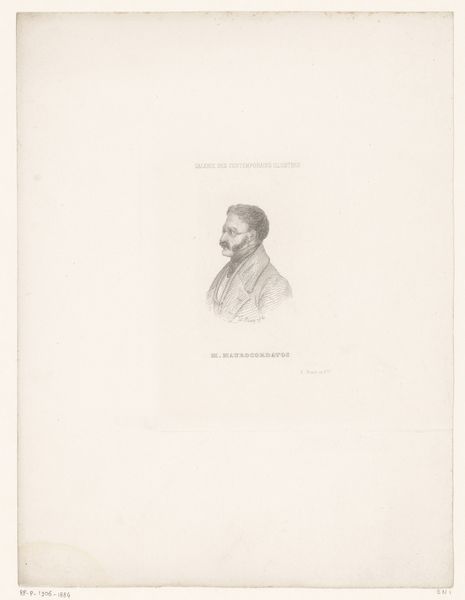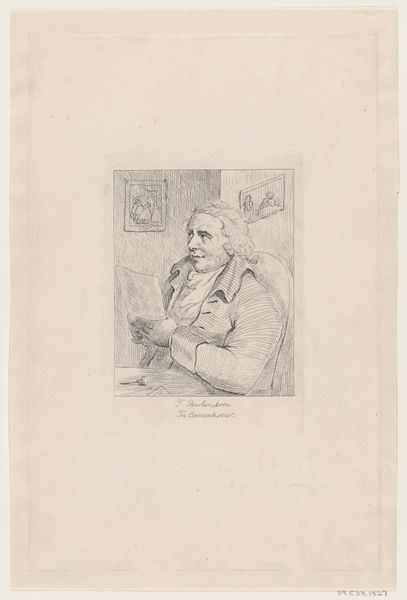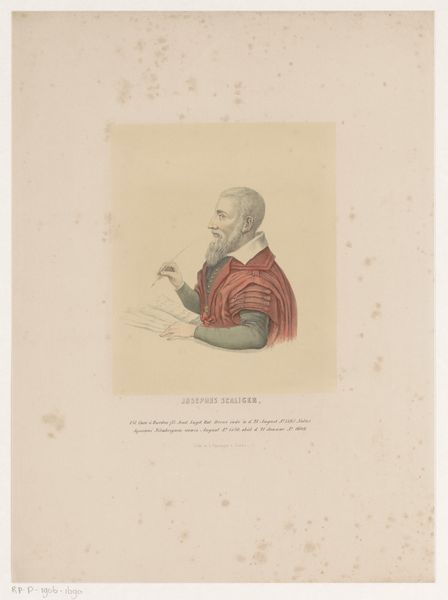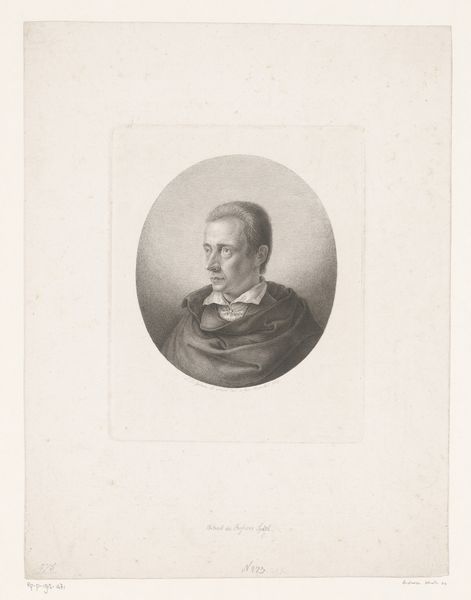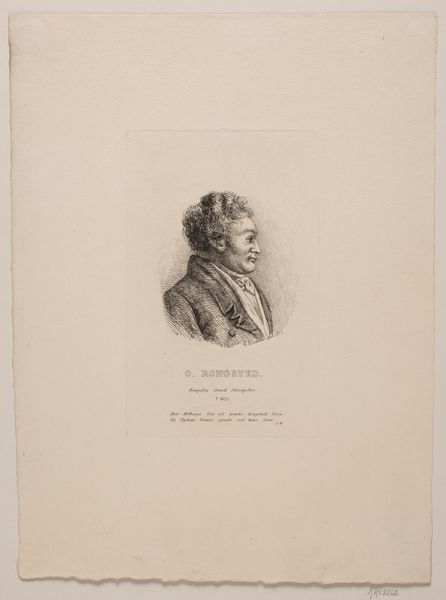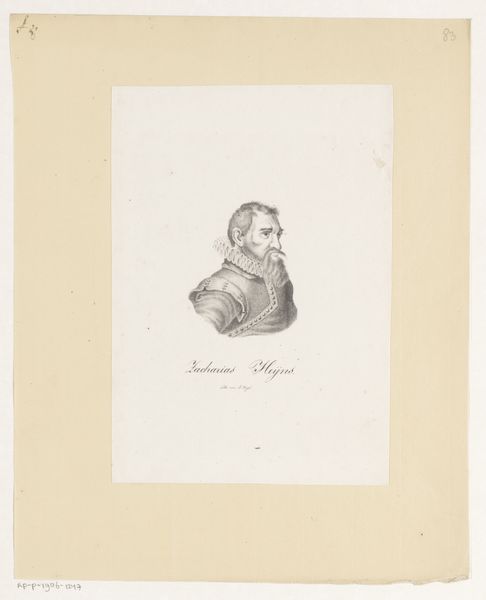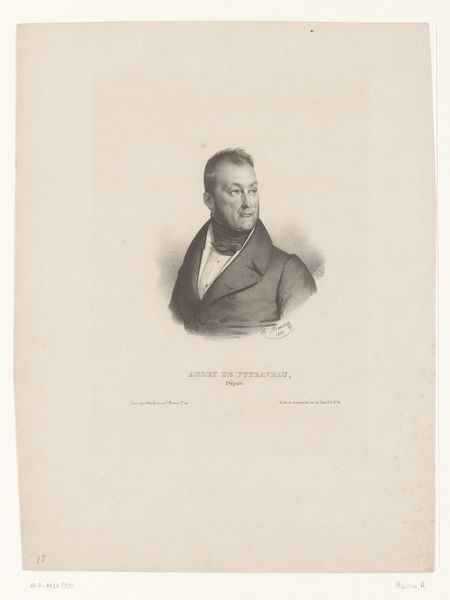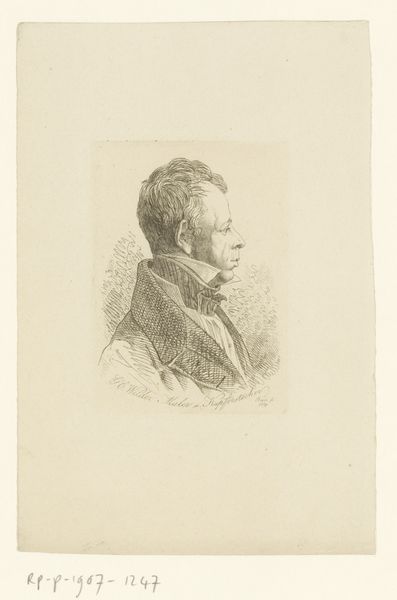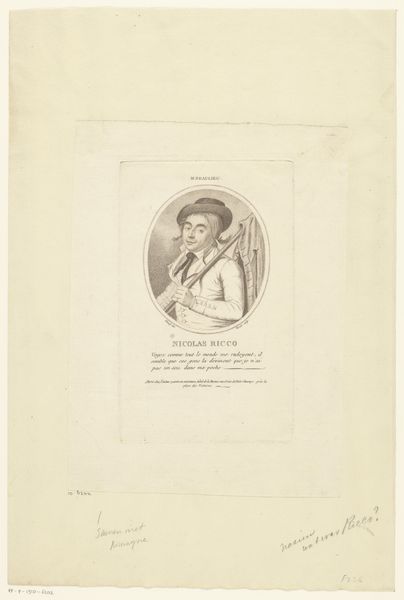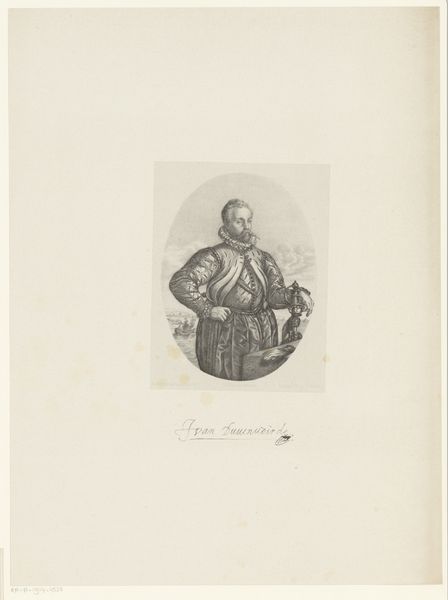
print, engraving
#
portrait
# print
#
pencil sketch
#
old engraving style
#
figuration
#
personal sketchbook
#
history-painting
#
academic-art
#
engraving
Dimensions: height 347 mm, width 260 mm
Copyright: Rijks Museum: Open Domain
Editor: This is a print entitled "Portret van Josephus Scaliger" by Leendert (I) Springer, created around 1850. It’s an engraving and feels quite formal, very much in the style of an official portrait. What can you tell me about it? Curator: What strikes me immediately is how this portrait, though created in the 19th century, reaches back to visualize a figure from the late Renaissance, Josephus Scaliger, a scholar known for revolutionizing the concept of historical chronology. Springer is not simply depicting a man; he’s invoking a historical narrative. Who was Scaliger to this artist and his audience, do you think? Why represent him through the lens of the 19th century? Editor: I guess Scaliger represented a kind of intellectual authority to them? Someone who embodied a certain ideal of scholarship? Curator: Precisely. Academic art in the 19th century often used historical figures to legitimize its own values and hierarchies. It is using the figure of Scaliger to reinforce specific power dynamics and ideals around knowledge production that would exclude women and those considered marginal at the time. Note also the meticulous detail of the engraving - is this celebrating objective truth? Whose truth is being celebrated, and at whose expense? Editor: So, this isn't just a portrait of a scholar, it's about how knowledge and authority were constructed and visualized during a specific historical moment? Curator: Exactly! It invites us to question whose stories are told, how they're told, and who benefits from those narratives. By examining historical representation through a contemporary lens, we expose the ideological underpinnings of the work. What’s changed? What hasn’t? Editor: That’s fascinating. I see so much more than just a historical portrait now. Thanks! Curator: My pleasure. Looking at art this way gives a new appreciation of art history as a tool to explore current inequalities.
Comments
No comments
Be the first to comment and join the conversation on the ultimate creative platform.
